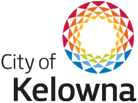Sandbag & debris removal
Residents with sandbags that are no longer necessary can take them to the roadside of their property, where work crews will be travelling through neighbourhoods to collect them. Sandbags can also be dropped off at designated locations. Under no circumstances should sandbags be emptied into any creeks, lakes, wetlands, beaches or other natural areas.
Property owners with sandbag walls can begin to lower them, but should maintain a wall that protects against wind and wave action to a height of 60 centimetres above the current lake level. Okanagan and Kalamalka lakes remain about 45 centimetres above full-pool (342.48m). The more work property owners are able to do with the demobilization effort the sooner clean-up can be completed.
Residents removing sandbags and working around stagnant water should take precautions, including wearing gloves and rubber boots, as well as washing hands regularly.
For residents in areas where the flooding risk has passed, more information about sandbag locations for drop off, details about recovery efforts, and a link to the online Emergency Management BC sandbag recovery application, can be found at www.cordemergency.ca/beprepared/flood-recovery.
Currently, crews are removing flood protection on public land that is no longer needed in communities throughout the Central Okanagan. Tomorrow, crews will begin removal in Lake Country.
The second stage of the demobilization process will see all flood protection removed – a process expected to continue into August. Crews will remove any remaining protective barriers on both private and public land. Neighbourhoods will be notified via Emergency Operations Center communications channels, electronic signboards and the media. Residents are encouraged to sign up for e-updates at www.cordemergency.ca.
Debris
The province is funding the removal of unnatural debris from public land – broken docks, unregistered boats, garbage and barrels – along with large trees or stumps. Work is already underway. Removal of these materials will happen first in public beaches, parks.
Small debris on private property is the responsibility of the resident and can be placed in green yard waste bins. Damaged docks and pilings are the responsibility of the property owner.
No and low wake boating areas
Those residents and visitors who are planning on boating on area lakes are encouraged to follow the guidelines for respectful boating. Boaters can view the Boating Wake maps at www.cordemergency.ca/map, which indicate no and low wake boating areas in order to protect against wave action and shoreline erosion. Once lake levels reach more reasonable levels, regular boating activities can resume.
Lake levels
When the level of Okanagan Lake reaches 342.60 metres above sea level, most beaches are expected to reopen, and most docks should be above water again. When the lake returns to its normal full-pool level of 342.48 metres, all beaches will reopen and boating activity can return to normal.
Okanagan Lake dropped 2.2 centimetres over the past 24 hours and is now at 342.927 metres above sea level while Kalamalka Lake decreased 1.1 centimetres and is now at 392.153 metres.
For municipal information such as boat launch, park and beach closures, and water quality advisories, visit their websites:
- City of Kelowna
- City of West Kelowna
- District of Lake Country
- District of Peachland
- Regional District of Central Okanagan
- Westbank First Nation
For beach water quality updates, visit Interior Health’s Water Samples page on www.interiorhealth.ca.
To stay informed about flooding and the recovery efforts, visit www.cordemergency.ca, sign up for e-updates or call the information line at 250-469-8490.







